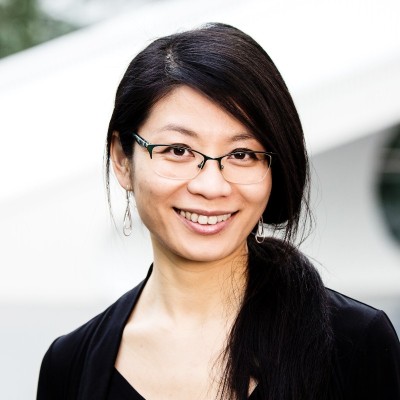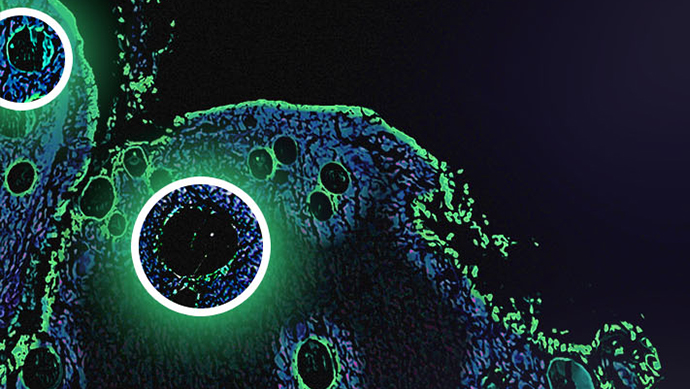Event Showcase: Sequencing the Future at Spatial Biology Europe

Day one of Oxford Global’s Spatial Biology Europe conference, held in the vibrant heart of Berlin, kicked off what would be an exciting symposium. We sat down with Miao-Ping Chien, Principal Investigator at Erasmus University Medical Center to discuss what she thought were the highlights of the conference so far, as well as what she was looking forward to.
Highlights and Takeaways from Spatial Biology Europe

“The event is delivered in three parts: technology, analysis, and application.
"My work fits with the technology and application parts. For the technology part, the current limitation, in my opinion, is that we don’t have (spatial omics) techniques enabling profiling cells at the single cell level while maintaining in-depth sequencing profiles. But we can definitely see that the field is pushing towards this direction.
"Currently, what people are doing (to reach the abovementioned goal) is to combine spatial profiling data with single cell sequencing data. So, for this, you definitely need some advanced analysis, for instance, how to integrate these two data sets together, how to extract or transfer the single cell data to spatial configurations, or how to extract cell types from the integrated data. There are some reliable methods for this and that's how people work around the limitation of current spatial omics methods. There are a couple of talks that discuss this challenge in this congress. Tomorrow we will hear more about how we can combine single cell sequencing with spatial omics profiling.
"If the spatial omics techniques can reach single cell resolution while maintaining in-depth sequencing profiles, then I think spatial omics could gradually take over current single cell technologies, which was also discussed in one of the discussion panels.”
What are your research priorities for the rest of 2022 and beyond?
“Pushing our spatial omics technology towards single cell resolution with in-depth profiling is our main priority. In-depth sequencing means we can identify much more genes per cell, like ten thousand genes or more per cell. That is what we are aiming for, because the more genes you can identify, the more information you can extract.
"The (spatial omics) technologies that we have developed or are developing allow us to annotate cells of interest in the upstream; the annotation is based on either cells’ functional features or spatial locations. We have built our own microscopy setup where we can screen tens of thousands of cells or hundreds of thousands of cells simultaneously without losing their single cell or subcellular resolution. We can also selectively label any cells of interest under the microscope (with fluorescent or nucleotide probes), this is the annotation I meant earlier.
"With this, we can look at individual cells’ features like different migration speeds, different division patterns, where the cells are located, et cetera and we can label or annotate any cells that we are interested in. The annotated cells can then be traced back from the single cell sequencing profiles.
"The technique works very well already in 2D cultures. We have some promising, preliminary data from tissue slices, which I also presented earlier today. And we are very close to advancing this technology to a real application, for instance, to study the interaction of cancer cells with their tumour microenvironment.
"With this technique, we not only maintain the single cell resolution, but also the in-depth sequencing profiles. So, this is the goal, in terms of our spatial omics profiling technique, for the rest of this year.”
What are the most important areas impacting the landscape?
“In addition to spatially profiling cells at the single cell resolution with in-depth profiling, the field is also interested in profiling samples from FFPE slices or profiling in a high-throughput manner.
"Last month, I noticed one cool technology, Stereo-Seq, developed by the R&D group from BGI; they have published a series of papers in Cell-series journals, where they used their DNA nanoball-patterned arrays and RNA capture technology to improve the (single cell) resolution and the number of cells to be profiled. This technology can profile tissue slices in a large size (in centimetre-by-centimetre, ‘panoramic’ field of view), without losing its cellular resolution. They applied the technology to developmental biology and to understand the temporal dynamics of embryo development. They also applied it to plant biology. Pretty cool.
"Another new development in the spatial omics field is the development or combination of multi-omics modalities, for instance combining spatial transcriptomics with spatial genomics, epigenomics and/or proteomics.”
What are your thoughts on where the field is heading?
“This field is developing so rapidly. We are seeing new technologies being developed every half year or every few months. I'm personally very excited about this development and dynamics as I'm also one of the technology developers in this field. These technologies are related to or working towards single cell resolution with in-depth profiling, profiling FFPE samples or a combination of multi-modalities. With these techniques, we can address many questions that are difficult to tackle in the past, for instance, how tumour cells interact with their tumour microenvironment and how their interaction affects therapeutic treatments or immunotherapies.
"That said, most of the technologies are still in the exploratory phase or in its infancy. I am anticipating seeing some of the technologies becoming more robust or easily accessible.
"I’m also looking forward to seeing more companies offering services in spatial omics profiling, like what we have for the current state-of-the art single cell sequencing. I believe that the platforms or technologies that are robust and can generate reproducible data will eventually stand out and become the common methods down the road.
"The analysis part has to be robust and reproducible as well. After that, clinical applications will start to become possible, because right now there are too many variations - the technologies are too exploratory, or the analysis is still not robust yet. But I am very optimistic and have a strong faith that we will tackle these issues in the near future.”
Our event highlighted the best and most worthy research in spatial technologies, applications, and analysis. Playing host to preeminent academics like Dr Chien and over 150 Vice Presidents, Directors, and Senior Managers from leading healthcare, biotech, pharma, and research institutions.
Visit our Spatial Biology Europe homepage to find out when you can join us at our next summit, connecting global academic and research organisations as well as pharma representatives for high-level discussions on the latest innovations in spatial research and technologies.





